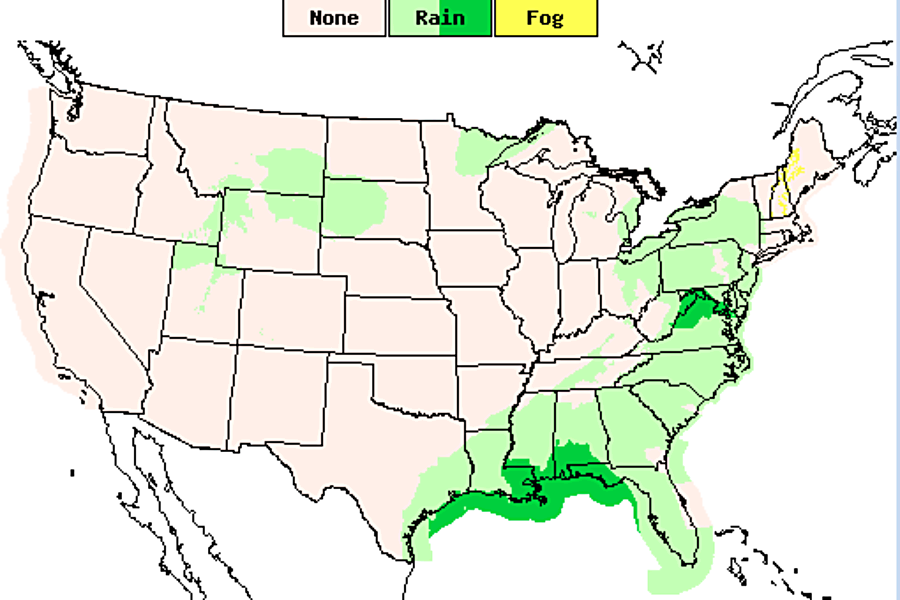Supermoon lunar eclipse: Do you live where you can see it?
Loading...
| Atlanta
The last of a rare “tetrad” of dramatic moon eclipses this year will occur in primetime Sunday night.
But who will get to see it?
Weather forecasts indicate that a lot of Americans will have to wait another 18 years to have the chance to actually see a red-tinted "Super Harvest Moon Lunar Eclipse."
Unlike many stellar events - such as meteor showers or solar eclipses – the full lunar eclipse should be visible anywhere across the US, and without any special equipment, from the star-studded skies of Nebraska to neon-lit Times Square.
But the rare combination of a total lunar eclipse with a full harvest moon, all added to the “super moon” effect of the satellite’s unique close proximity to the Earth, has one major nemesis: A glum conglomeration of clouds and rain laid across a swath from New York to Houston, including large parts of the Ohio River Valley and the Appalachians, as well as parts of the Great Lakes.
“It really doesn’t look great” for the Atlanta area and much of the Eastern Seaboard, in part thanks to a wet low pressure system pressing northward from the Gulf of Mexico, says David Nadler, a meteorologist at the National Weather Service’s regional office in Peachtree City, Ga.
The National Oceanic and Atmospheric Administration (NOAA) is forecasting that nearly a third of the US mainland will have sky cover, according to the latest check of the agency’s National Digital Forecast Database.
Given that the cloud cover will appear over some of America’s most populous areas, Sunday’s special lunar event will be more exclusive than many Americans would like. Individually, supermoons and lunar eclipses aren't particularly rare. But the last time a supermoon coincided with a total eclipse was 1982. The next such event will happen in 2033.
But don't cancel the eclipse viewing party yet.
For those watching from west of the Mississippi River as well as most of New England, conditions are setting up perfectly, according to the National Weather Service. Those areas are expected to have clear, star-lit skies as the eclipse begins shortly after 9 p.m. EDT on Sunday.
Especially across the East Coast, the moon will take on a reddish hue as the earth’s shadow fits itself over the moon, giving watchers a rare reflection of Earth’s existence.
The reddish tint basically encompasses “all of the sunrises and sunsets across the world, all at once, being reflected off the surface of the moon,” as Sarah Noble, a NASA program scientist, tells the New York Times.
“How the moon will appear during totality is not known,” writes Space.com skywatch correspondent Joe Rao. “Some eclipses are such a dark gray-black color that the moon nearly vanishes from view. At other eclipses it can glow a bright orange.” He writes that the event has a “hypnotizing beauty.”
If the National Weather Service sky cover predictions for much of the Eastern Seaboard hold true, disappointed sky watchers have other options. For one, the Slooh Community Observatory (online observations from a global network of telescopes) will offer high-definition footage of the event. Space.com will also have live coverage.






